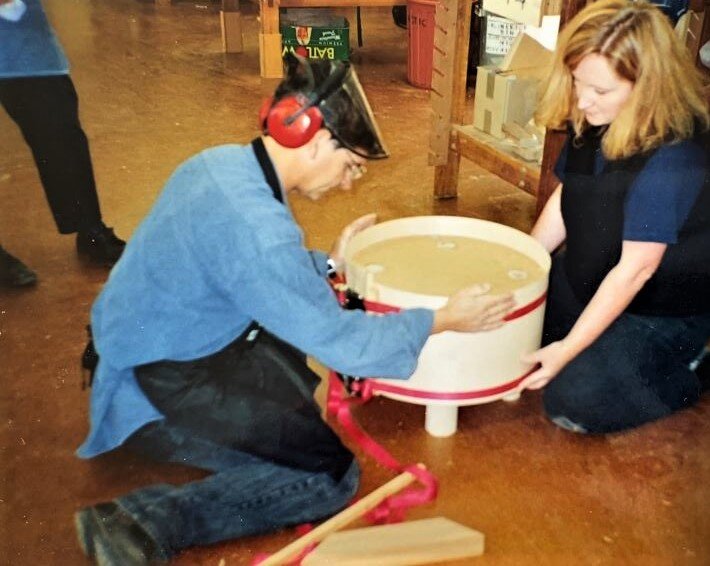In addition to qualifications in Architecture Melissa has trained in the art of Fine Woodwork.
Melissa took a 12 month sabbatical to train at the Sturt School for Wood, part of the Sturt Gallery & Studios, in Mittagong New South Wales. It was an intensive full time course covering all aspects of woodwork starting with the making of your own tools such as mallets and diagnal measuring sticks (to check the squareness of corners) to the fabrication of furniture.
2 years later Sturt invited Melissa back to undertake the position of Artist in Residence for the year. In this time she ran her own workshop exploring new ideas and forms, whilst she tutored the wood students the principles of design thorugh a series of lectures and workshops. Melissa also worked with the Design & Technology students at Frensham girls school (linked to Sturt), guiding them with the design and fabrication of their School Certficate and Higher School Certificate projects. https://www.sturt.nsw.edu.au/
Melissa was inspired by the training architecture students recieved at the Bauhaus Design School, where students were trained as ‘universal designers’,… “It became renowned for its modernist approach to art education, which scrapped the traditional divide between "fine" and "applied" arts, and redefined the relationship between art, design and industrial manufacturing techniques. In particular, its mission according to Gropius was to conceive and create the new building of the future, combining architecture, sculpture, and painting in a single form, which required the teaching of a new guild of craftsmen without the class-distinctions separating craftsmen and artists. In short, the Bauhaus trained students to be equally comfortable with design, craft and methods of mass production.” ref: http://www.visual-arts-cork.com/history-of-art/bauhaus-design-school.htm
Prior to studying Architecture at the University of Technology, Sydney (1987-92) Melissa trained in Interior Design & Colour Theory at the Shillito Design School under the tutorage of Phyllis Shillito https://adb.anu.edu.au/biography/shillito-phyllis-sykes-11683 and Peter Travis https://www.daao.org.au/bio/peter-travis/biography/
In addition to her teaching at Sturt School for Wood & Frensham Girls School Melissa has run RAIA ‘BEE Built Environment’ and ‘Girls into Technology’ workshops with primary school students, and taught tertiary design students AutoCAD computer drafting and SketchUp with Podium 3D design software.
The following are pieces from her catalogue of work
Kauri table
The following images illustrate the fabrication process of this table. Designed to test an alternative to the traditional post & rail method of construction, the table consists of 13 layers of ply with handcut veneers of kauri of the exterior faces. The legs were glued up in jigs, then after being run through the thicknesser & scarf jointed they were then biscuited to the horizontal rails. Once all the legs & rails were joined they were then biscuited together to make the table.
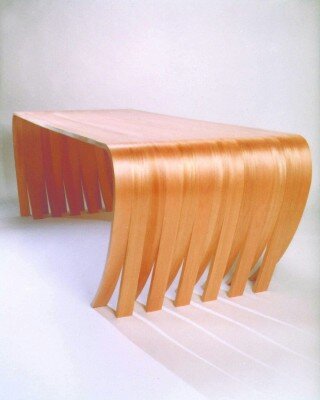


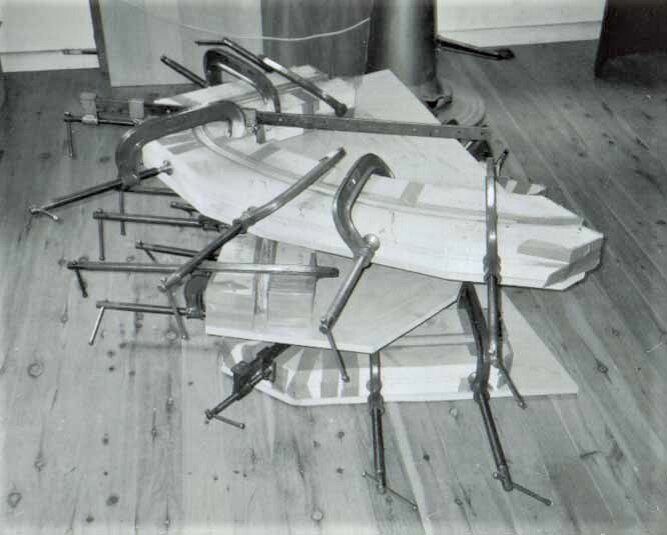

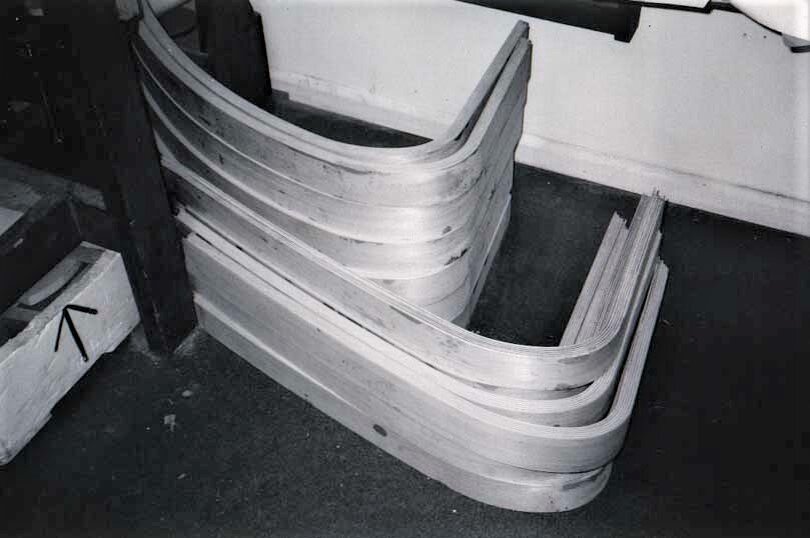


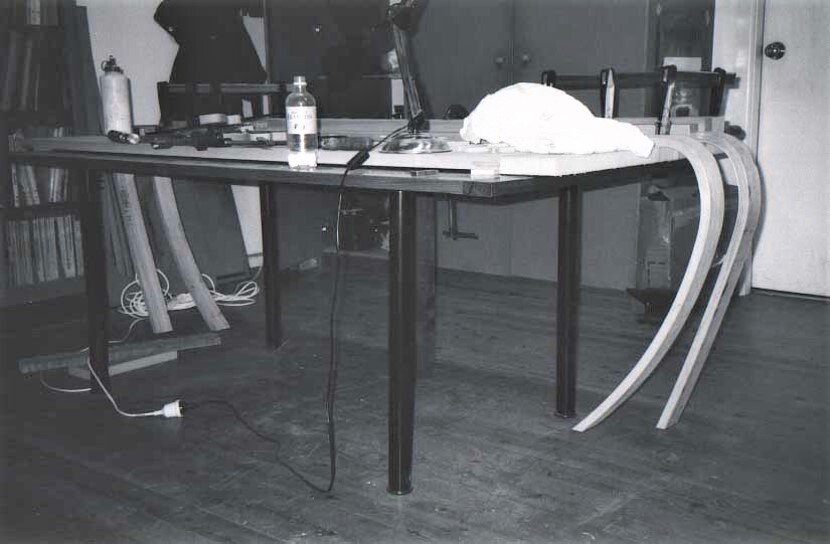






Kauri sideboard
This piece was fabricated by laminating 20mm square strips of kauri in a soft arc.
The back is an insert of perspex, polished with fine steelwool to make it softly translucent, to hide any visible cords or powerpoints on the wall. The legs are cutom made fabricated from aluminium with a sandblast finish.



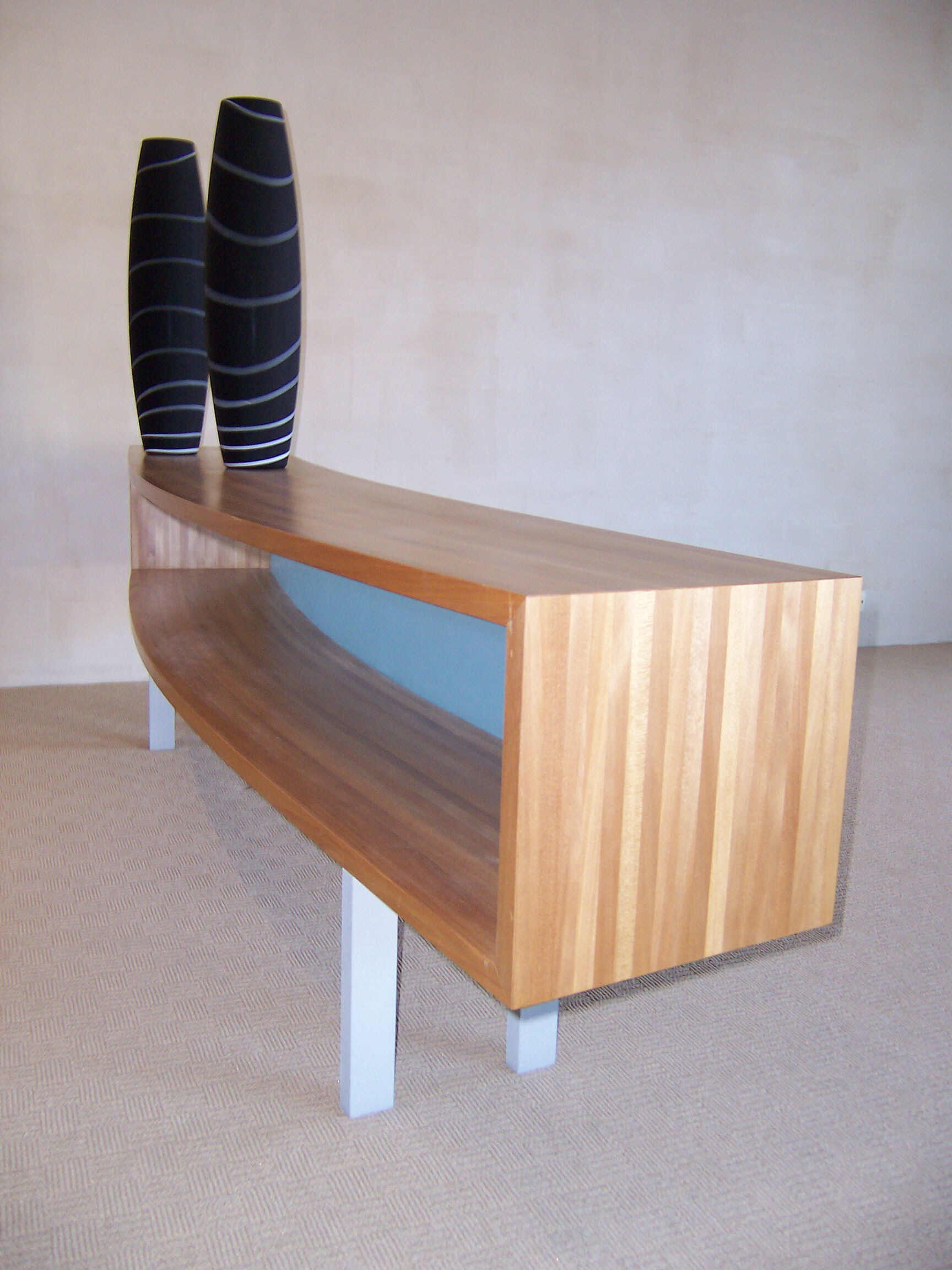
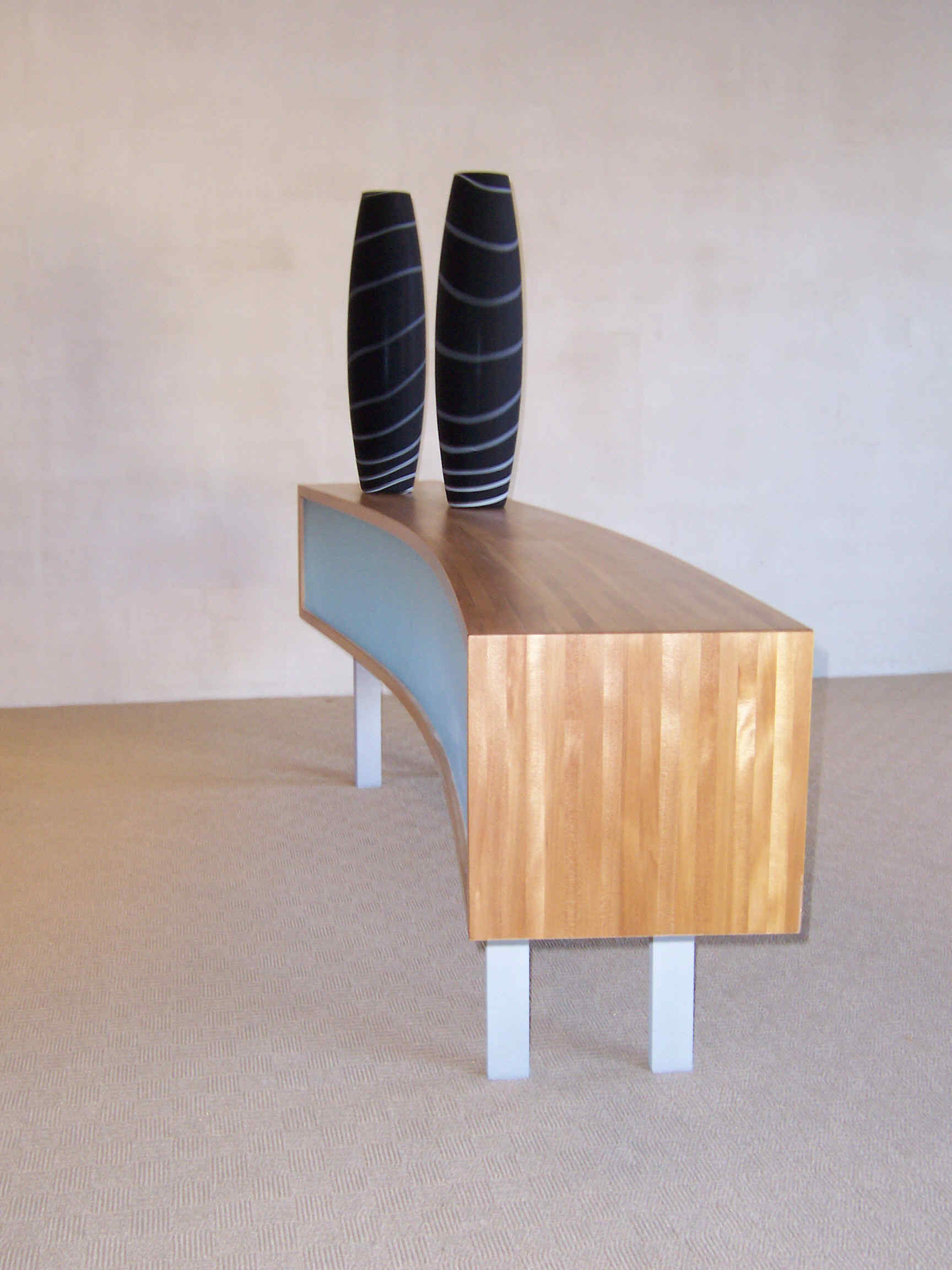
Kauri Mirror
This large 1200mm dia mirror frame, whilst looking heavy, can be lifted by one hand as its a hollow torsion box structure with kerfed walls.
The face is finished with handcut kauri veneers with inlaid aluminium strips.
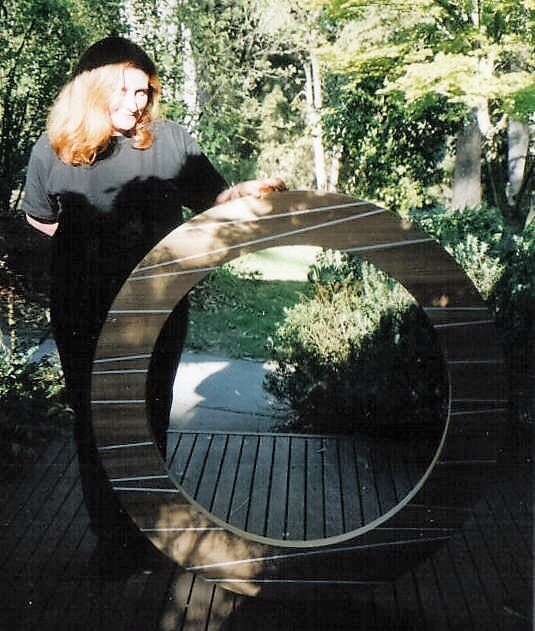

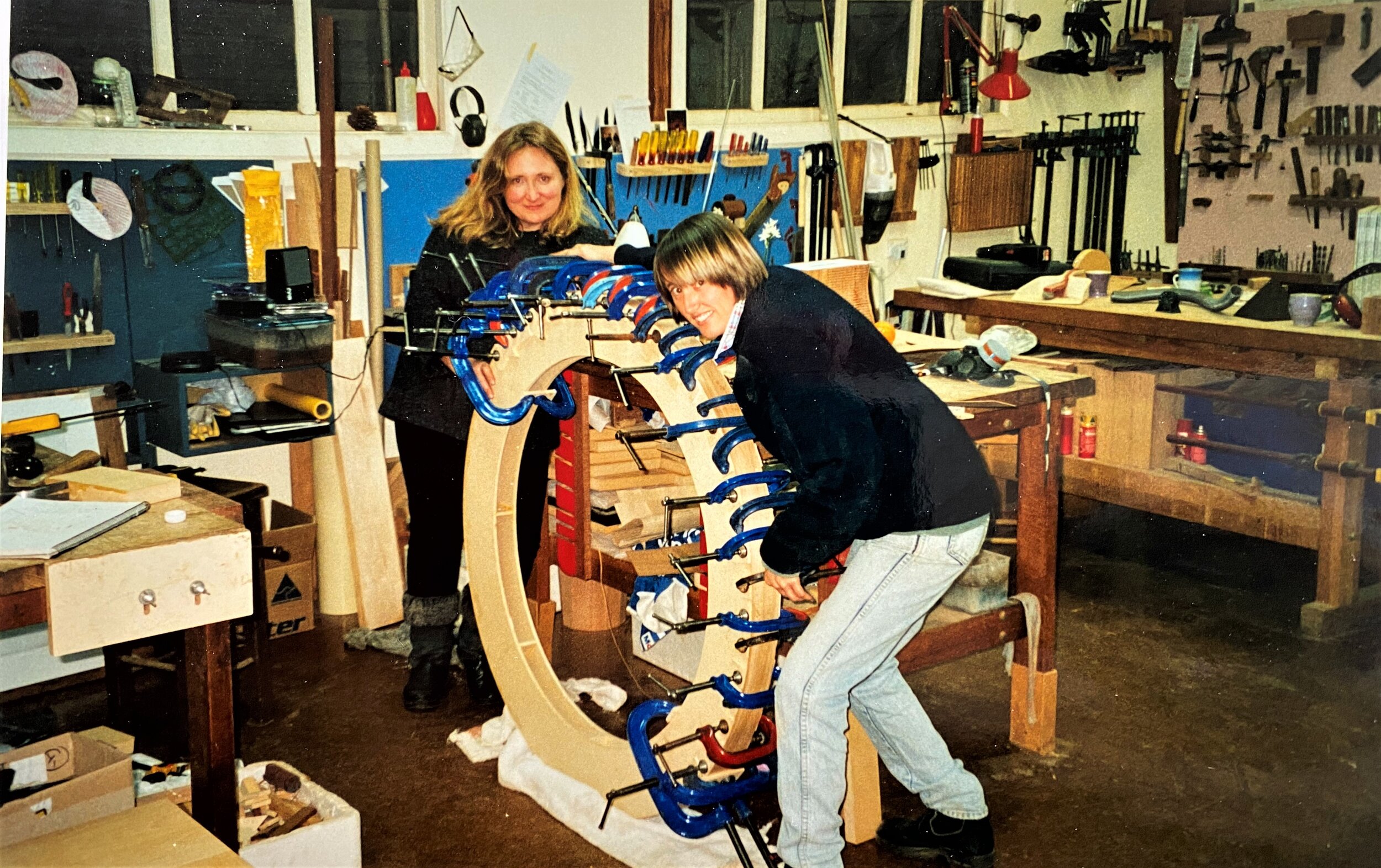


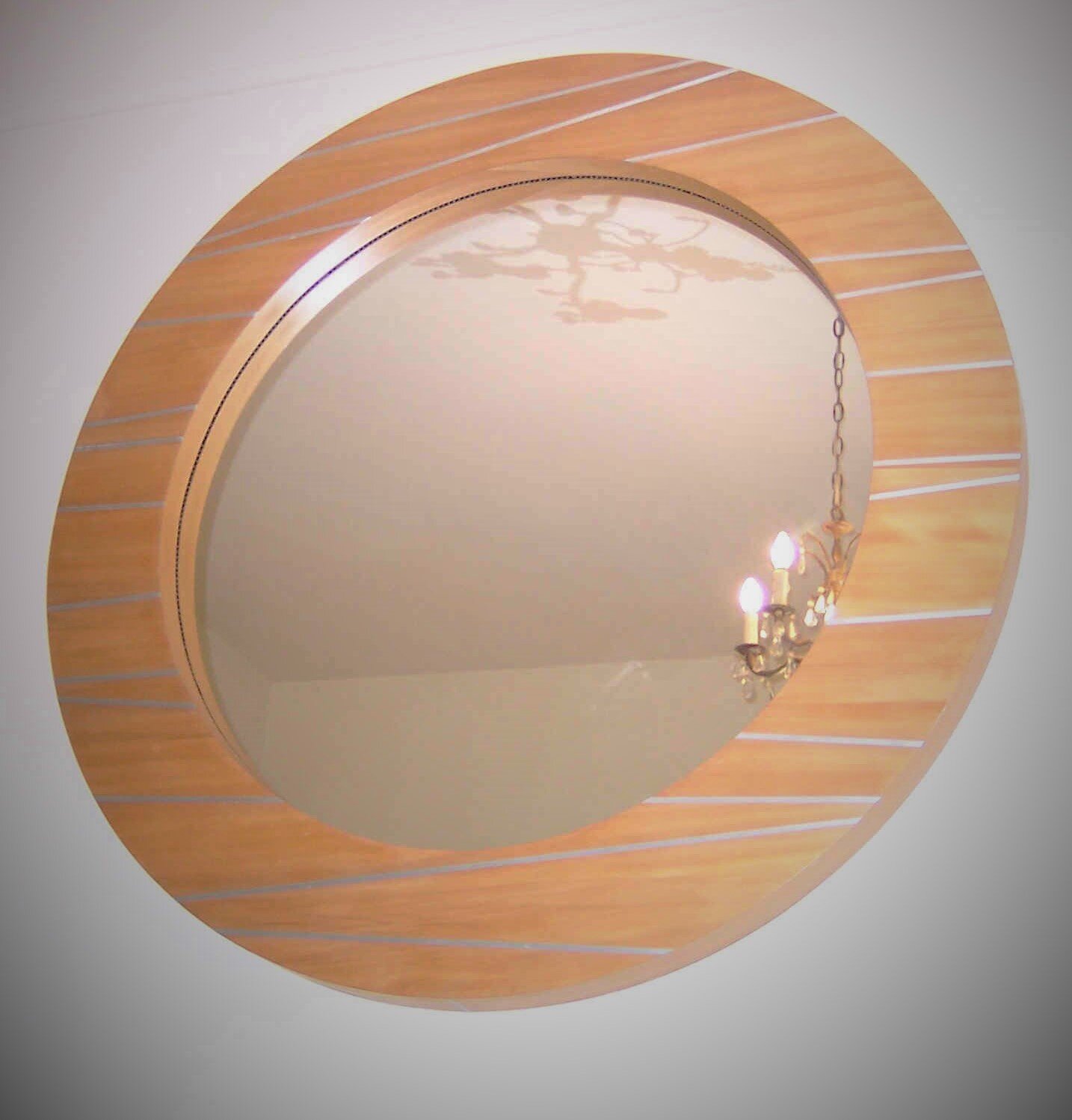
Silver Ash Sidetables
These tables were an experiment to test making a piece with repetitive elements- each table is fabricated with laminated ‘ski’ shaped flats.
These were made of layers of ply with handcut silver ask veneers of external faces. These pieces were shaped by using a vacuum mold, then biscuited together.
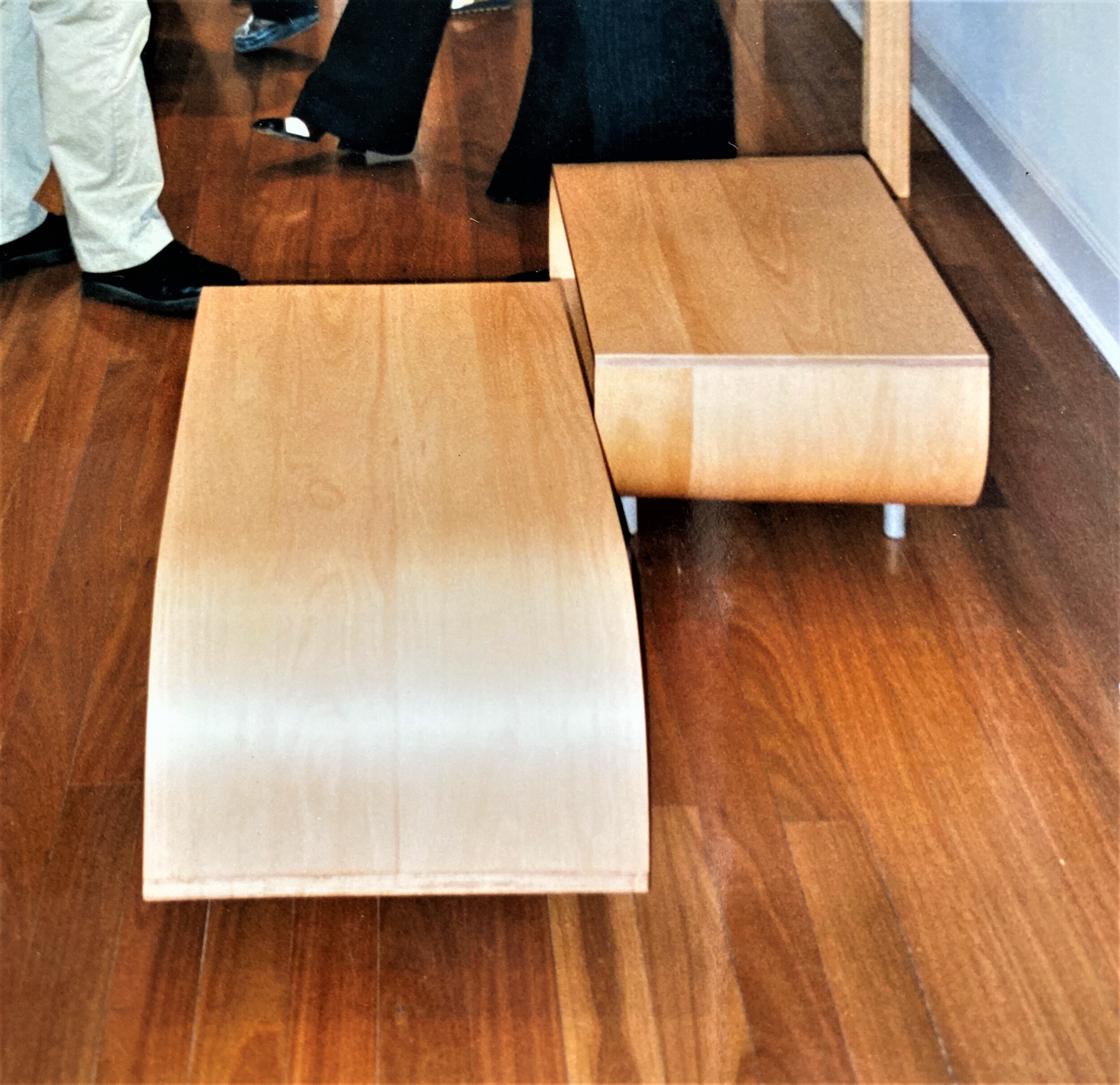
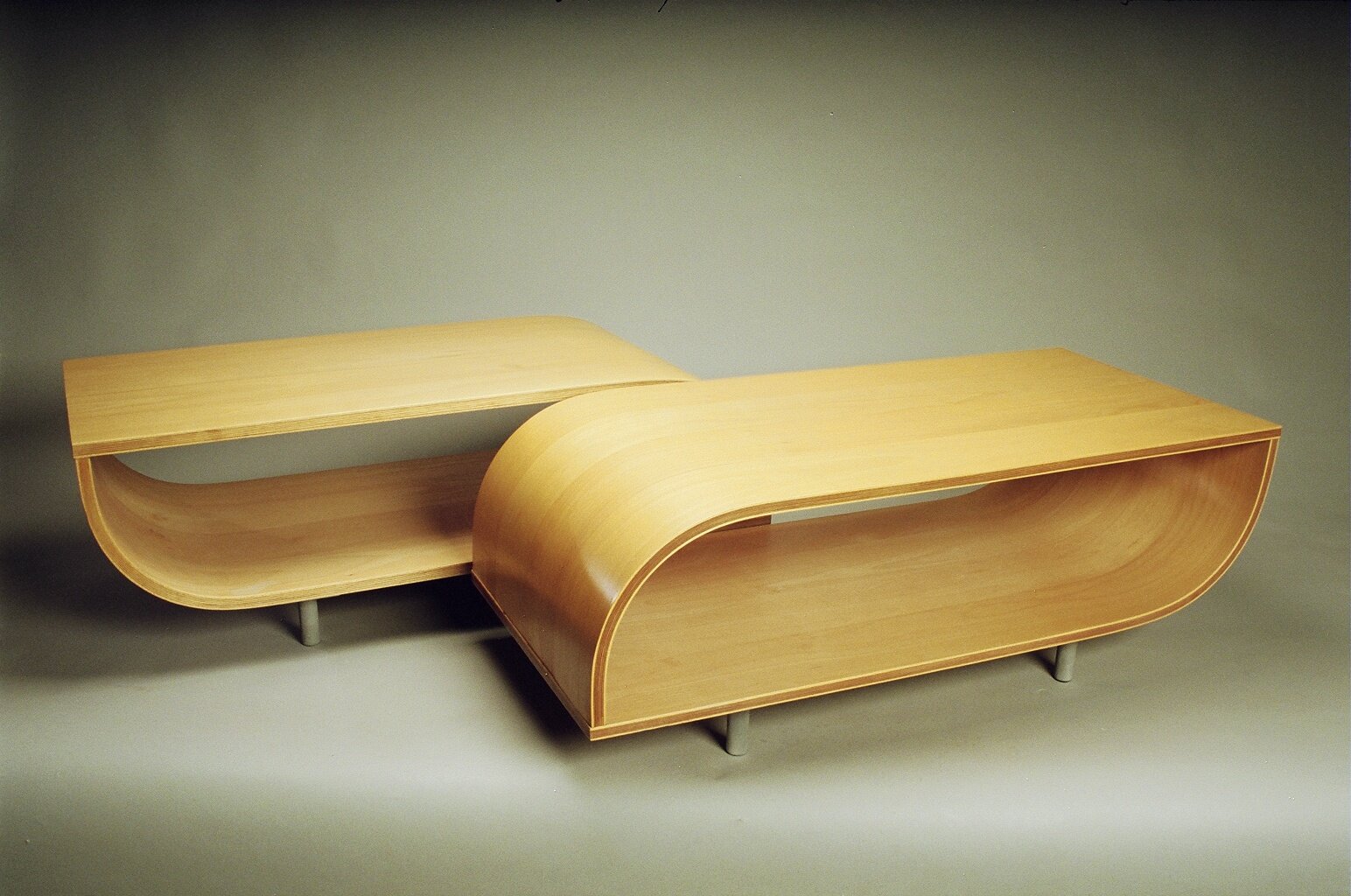

Rockmaple bedside table
A bedside table made as a torsion box with a discreet drawer. The veneers were juxtapositioned to play with the light on the grain.
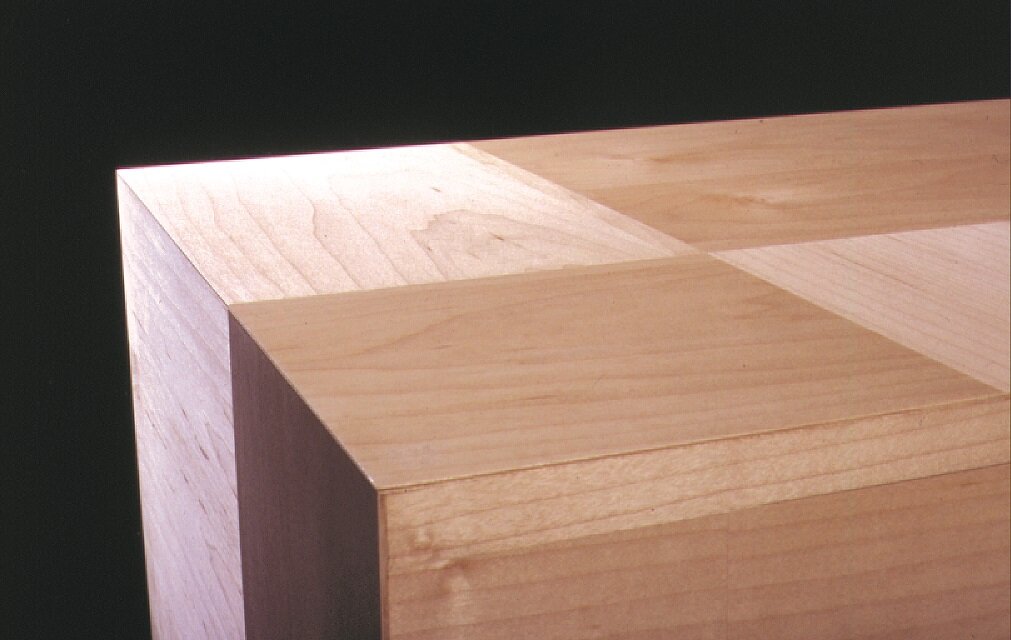
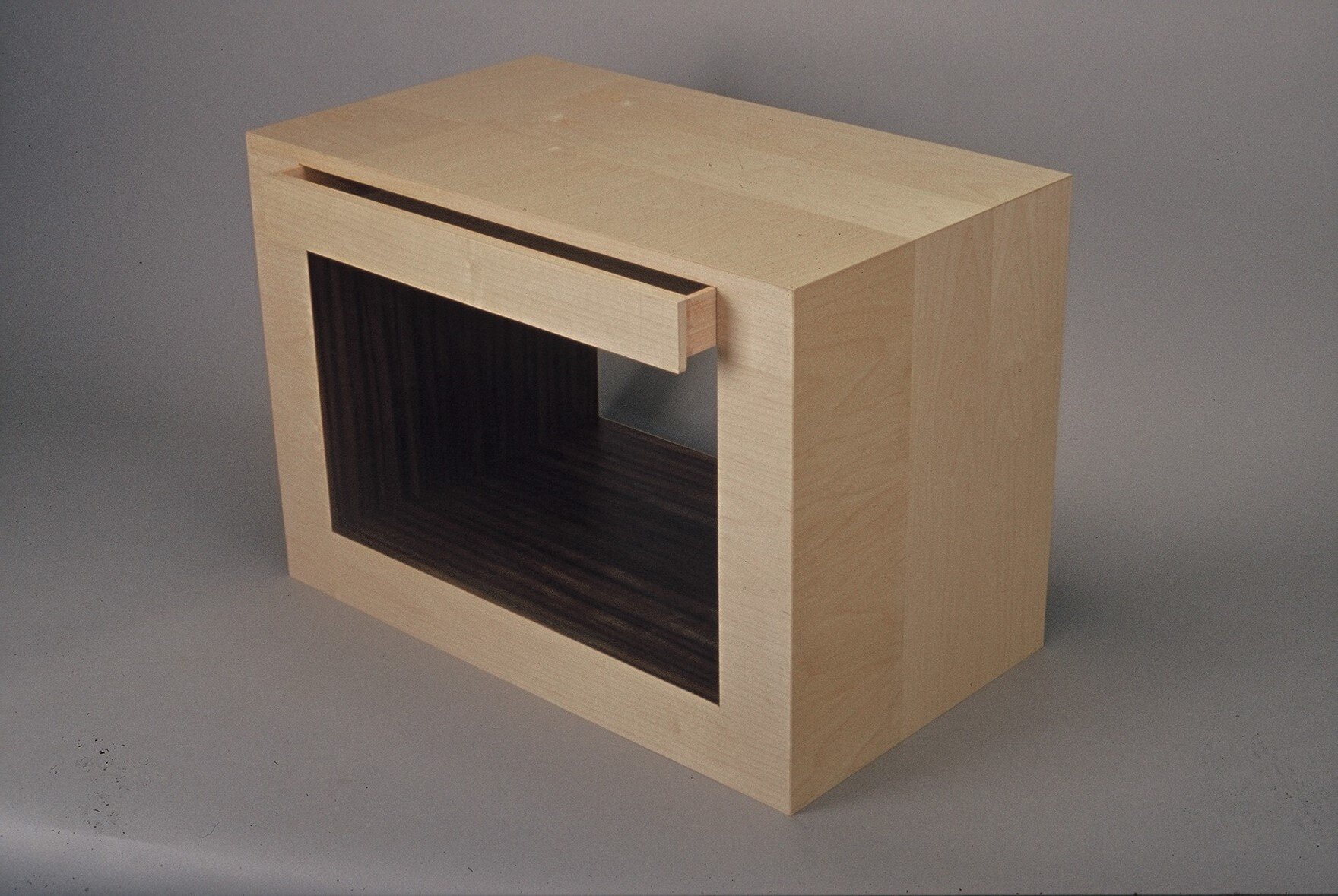

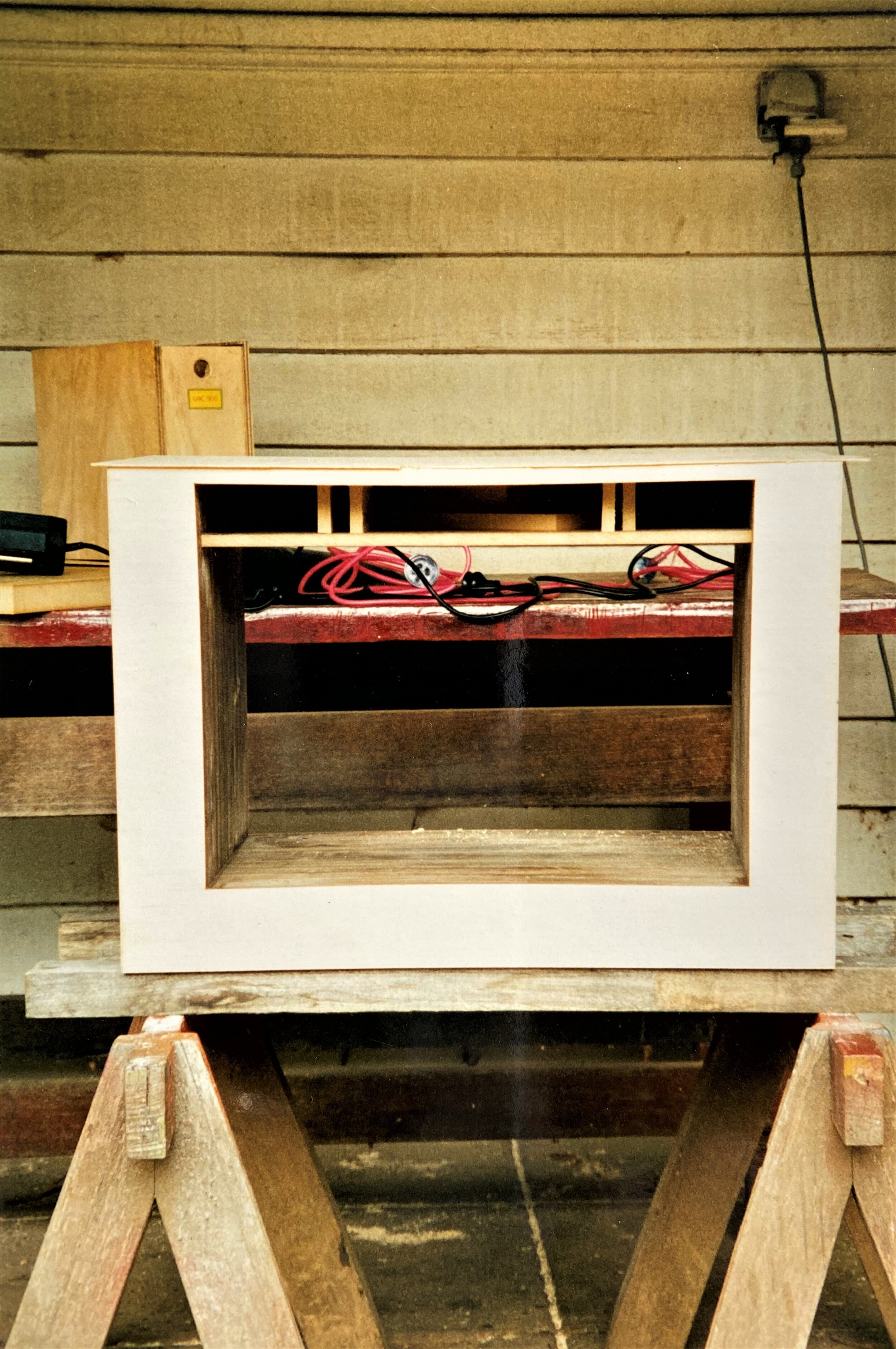



Spiral Light & Umbrella Stand



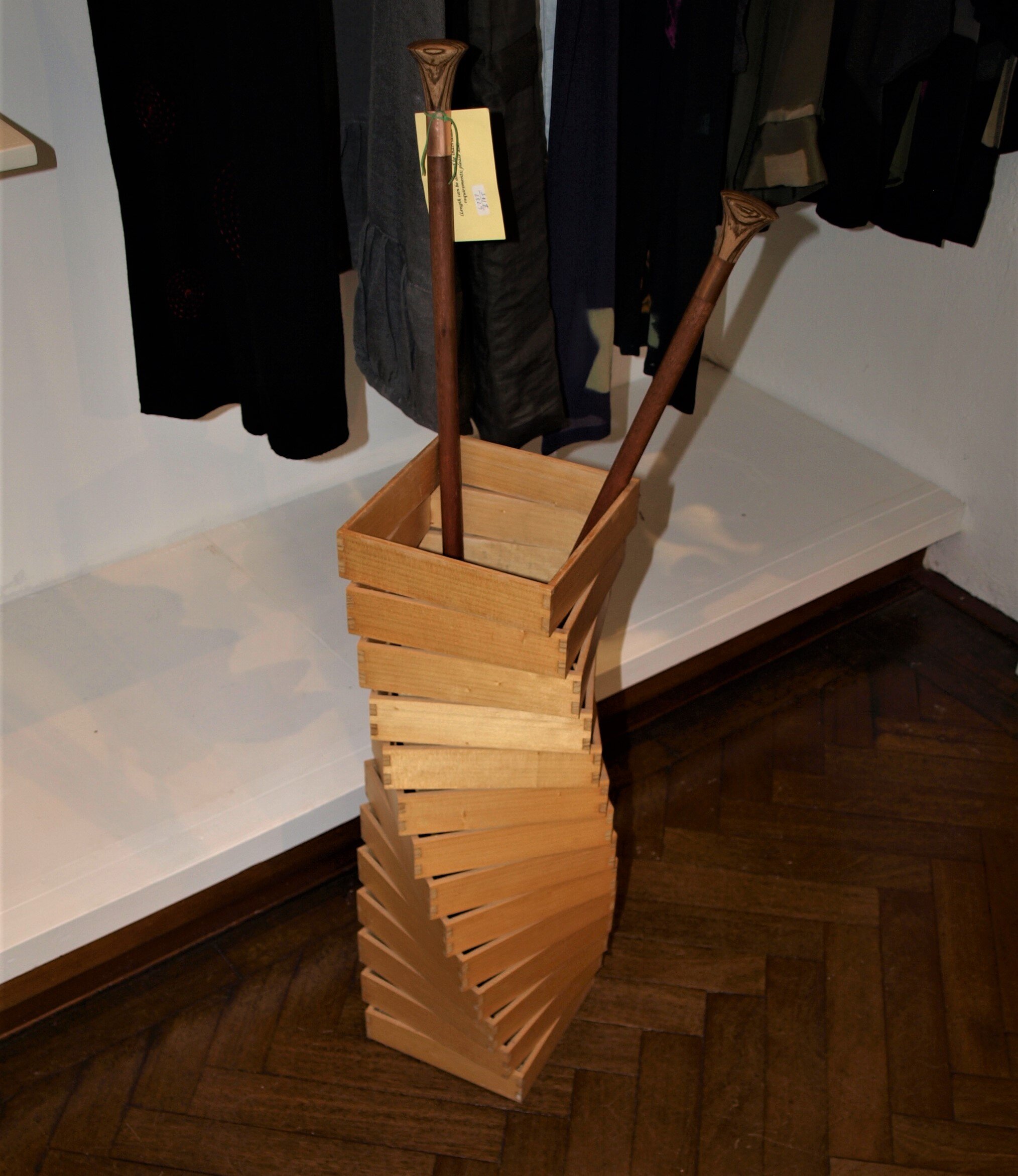


Production pieces
A few pieces that were made as multiple batch products.








